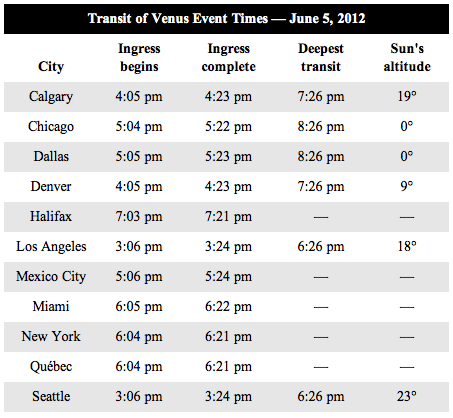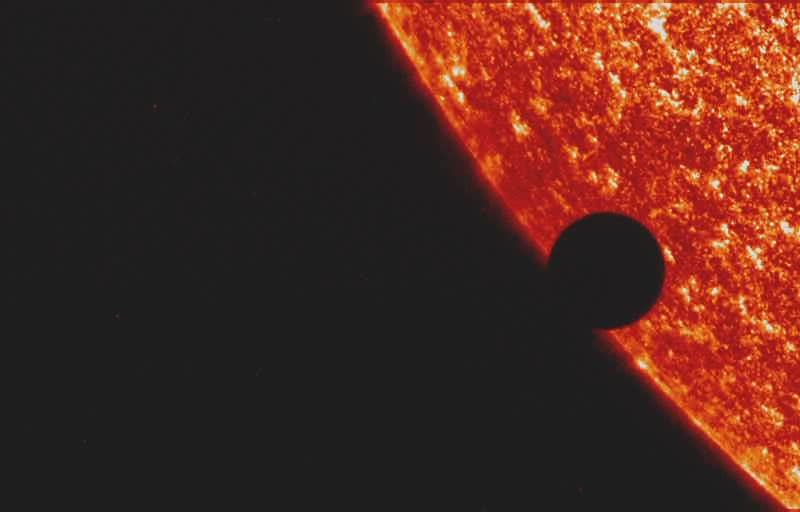
Image by NASA.
Manhattanhenge is cool, but it happens twice a year. Ditto Supermoons. Solar eclipses are less common, but nothing like today’s astronomical weirdness. This afternoon and evening, Venus will pass in front of the sun, for the last time in your lifetime unless you are a robot or a Time Lord. Here’s why you should try to watch it, and how.
It’s coming to your town. Here’s Sky and Telescope‘s list of North American times.

“Ingress” here means the point when Venus first moves onto the disc of the sun, which is what gives you the “black drop” effect.
And here’s NASA’s map.

If that’s too imprecise for you, there’s supposedly an iPhone app (though I couldn’t find it in the app store) that will let you track exactly when the transit will be visible in your locale.
It’s hard to watch, but it’s not THAT hard. Yeah, it’s a little bit of a pain in the ass to watch solar events, since you can’t just look up at them. But if you can get some #14 welder’s glass, you can look right at it — or if you have a solar filter you can take pictures. (Don’t look at it through smoked glass, multiple sunglasses, CDs, or any other cheesy homebrew solution.) Unlike for the solar eclipse, making a pinhole camera isn’t going to cut it — Venus will be large enough to see with the naked-but-for-welder’s-glass eye if you’re looking at the sun, but not large enough for the tiny image afforded by a pinhole camera. But you can use a small telescope or binoculars to project it on a screen, which would be awesome for group viewing.
If you don’t have access to welder’s glass or a telescope, try going to a college campus and hanging around either the astronomy or mechanical engineering departments until someone takes pity on you.
It’s historically significant. Edmund Halley (the comet guy) used the transit of Venus to help measure the size of the solar system. By triangulating the observed position of Venus from different locations on Earth, he could calculate the difference between Venus and our planet, and extrapolate the other distances from there. The results were pretty crude when this method was first tested, in 1769; the observations were imprecise and the findings murky. Even by 1882, observing the transit hadn’t resulted in a totally accurate scale of the solar system. But the point is, they were thinking! (If you only find history of science stuff cool when it serves up results we now recognize as perfect, you are doomed to disappointment. Life is short and science is long, and the errors are often more interesting anyway.)
If you’re feeling pressure from the next item, come back and click through to this account of 18th century scientists sailing with Captain Cook to take observations for the 1769 transit — their only chance to succeed in this mission, on a trip that ended up killing half the crew. Now that’s pressure.
It’s your last chance. Everrrrrrr. The next transit of Venus will be in 2117, and I hate to be the one to tell you, but you aren’t going to see it. Valar morghulis, etc. So it’s now or never — and that means that even if you think you don’t really care about seeing a black dot go across the sun, watching the transit is a way of connecting to time on a scale we rarely get to experience. Also, think of the FOMO if you don’t.



